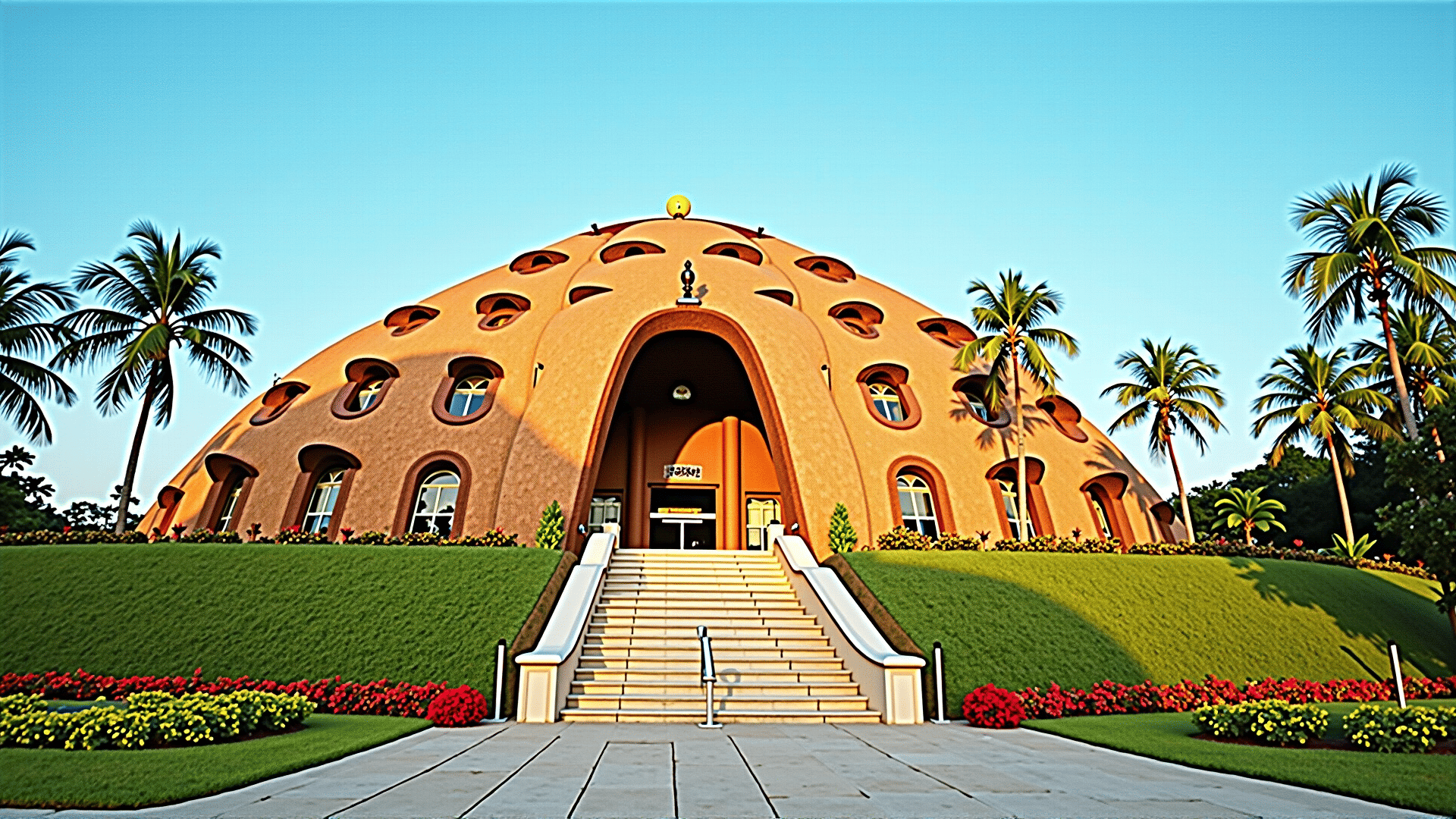Nestled in the heart of Manila, the Coconut Palace stands as an extraordinary testament to architectural ingenuity and cultural heritage. This iconic structure, commissioned in the early 1980s, is renowned for its unique composition and its celebration of Filipino craftsmanship and sustainability.
The very essence of the Coconut Palace lies in its dedication to using indigenous materials, prominently featuring elements derived from the coconut tree—an integral symbol of Philippine life. The palace ingeniously incorporates coconut shells, husks, and lumber into its design, showcasing the versatility and abundance of this remarkable natural resource. Every detail, from the intricate ceiling patterns to the grand sweeping staircase, is meticulously crafted, reflecting the harmonious blend of traditional and modern design principles.
Aside from the coconut, the construction draws on a variety of locally sourced materials, such as capiz shells for windows, bamboo accents, and banana fiber furnishings, further rooting the structure in the natural world of the Philippines. This not only highlights the resourcefulness inherent in Filipino culture but also emphasizes the importance of environmentally conscious building practices.
The Coconut Palace's architecture is inspired by the classic 'bahay kubo' or nipa hut, traditionally found in rural areas of the country. This traditional influence aligns beautifully with the palace's modern design, resulting in a fusion that mirrors the Philippines' journey through time—honoring its past while embracing innovation.
Each room within the palace pays homage to various provinces in the Philippines, a thoughtful design choice that brings a sense of national unity and pride. These spaces are filled with handcrafted furniture and decor, crafted by artisans from different regions, showcasing the diversity and rich cultural tapestry of the nation.
Beyond its architectural significance, the Coconut Palace also serves as a venue for cultural events and state functions, opening its doors to visitors who wish to explore its grandeur. Its existence is a reminder of the potential for creativity and sustainability to coexist, propelling the ideals of eco-friendly design to the forefront of architectural consciousness.
For those seeking to experience more than just a building, the Coconut Palace offers a narrative—a story of resourcefulness, cultural reverence, and a vision of a more sustainable future. As it stands proudly in Manila, it invites everyone to appreciate the boundless possibilities that arise when nature collaborates with human artistry.
